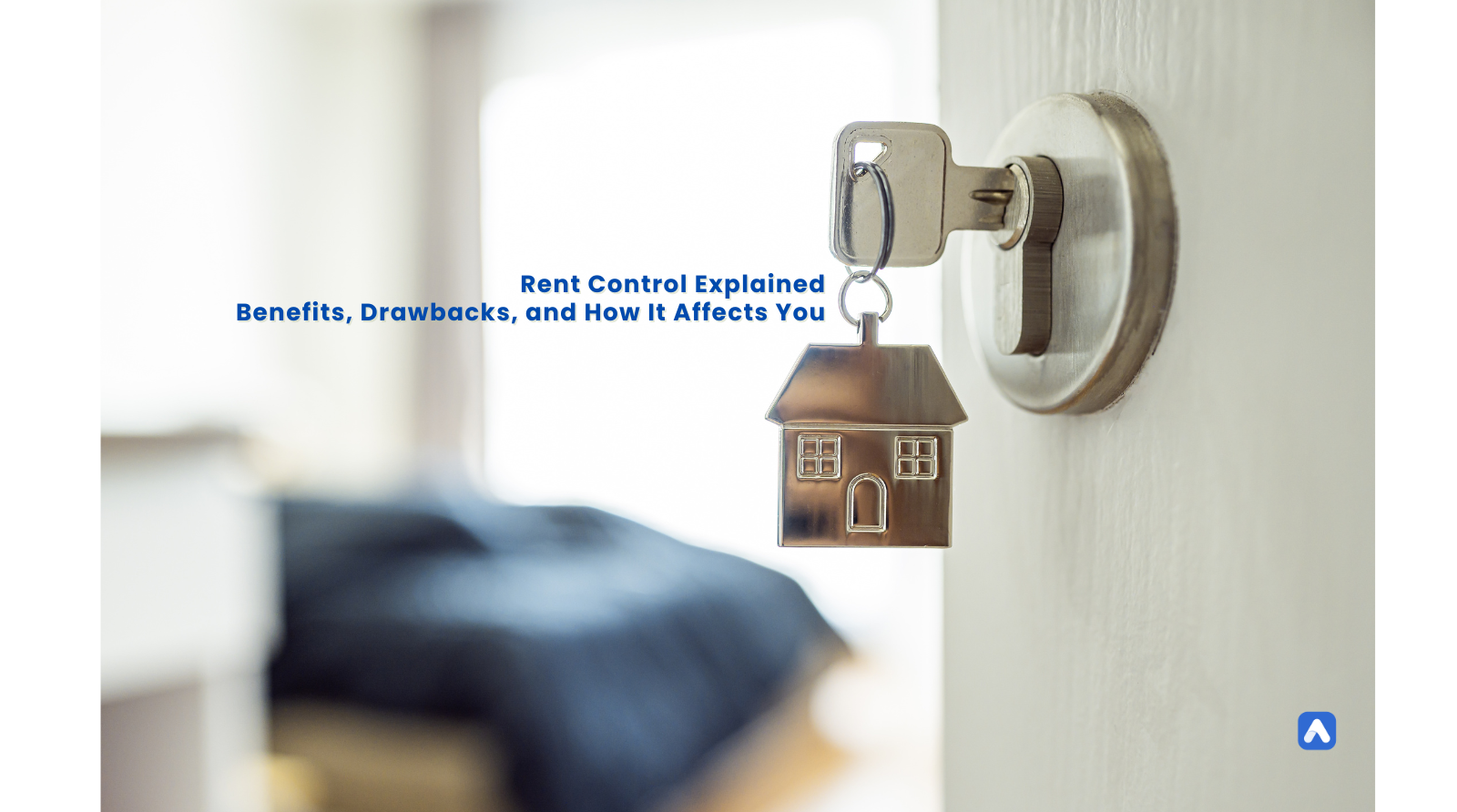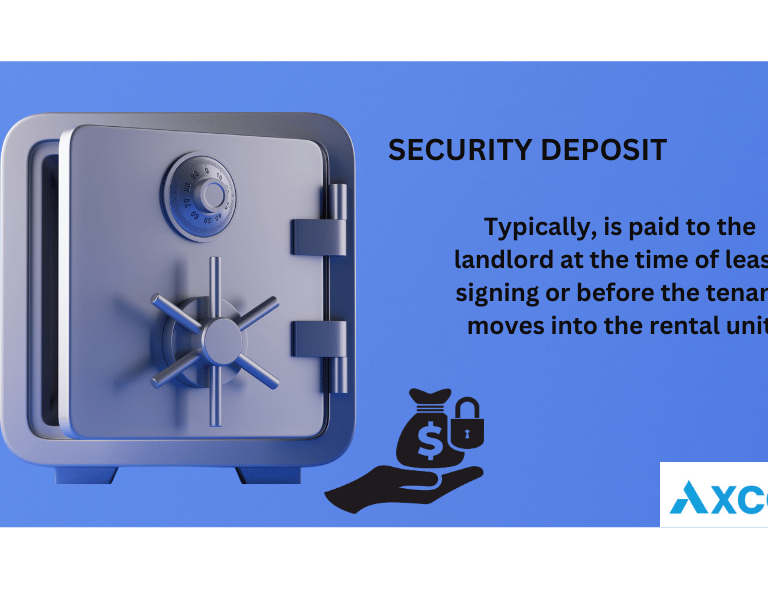Rent Control Explained: Benefits, Drawbacks, and How It Affects You
Rent Control: A Complex Housing Policy
Rent control, a government-imposed limit on the maximum rent that can be charged for a rental unit, has been a contentious topic in housing policy debates for decades. This policy aims to protect tenants from excessive rent increases and to ensure affordable housing options. However, its effectiveness and unintended consequences have been the subject of much scholarly research and public discourse.
Definition of Rent Control
Rent control is a regulatory mechanism that sets a maximum rent for residential units in a specific geographic area. This limit can be applied to all rental units or only to specific types of units, such as those in older buildings. Rent control policies can vary widely in terms of their scope, implementation, and the degree of flexibility they allow.
- Geographic Scope: Rent control can be implemented at the city, county, or state level, with varying degrees of coverage.
- Unit Types: Some rent control policies apply to all rental units, while others may exclude newer units or units in certain neighborhoods.
- Rent Adjustment Mechanisms: Rent control policies may include provisions for periodic rent increases, but these increases are typically limited to a certain percentage.
Overview of Its Relevance in Today’s Housing Market
The relevance of rent control in today’s housing market is significant due to several factors:
Rising Housing Costs
As housing prices continue to increase, many individuals and families struggle to afford adequate housing. Rent control can provide some relief by limiting rent increases and making housing more affordable.
Housing Shortages
In areas with limited housing supply, rent control can help to prevent excessive rent increases that may exacerbate housing shortages.
Tenant Protection
Rent control can protect tenants from predatory landlords and excessive rent increases, especially in tight housing markets.
Economic Inequality
Rent control can help to address economic inequality by ensuring that low-income individuals and families have access to affordable housing.
However, it is essential to note that rent control is not a panacea for housing affordability problems. It can have unintended consequences, such as housing shortages, decreased investment in rental properties, and reduced maintenance. Therefore, a careful evaluation of the potential benefits and drawbacks is necessary before implementing or modifying rent control policies.
Historical Background
Early Beginnings
The concept of rent control can be traced back to ancient Rome, where certain tenants were granted protection from excessive rent increases. However, modern rent control practices emerged in the aftermath of World War I.
Post-WWI Rent Control Measures
Following the devastation of World War I, many cities in Europe and the United States implemented rent control measures to address housing shortages and protect tenants from exorbitant rents. These early policies were often temporary and designed to alleviate immediate housing crises.
- Paris: One of the earliest examples of post-WWI rent control was implemented in Paris, France. The city enacted rent control laws to address the housing shortages caused by the war.
- Berlin: Berlin, Germany, also implemented rent control measures to protect tenants from rising rents and ensure housing affordability.
- New York City: In the United States, New York City was one of the first cities to adopt rent control, enacting temporary regulations to address housing shortages and protect tenants from exploitation.
The Great Depression and Housing Policies
The Great Depression led to a significant increase in unemployment and poverty, exacerbating housing affordability problems. In response, many governments enacted rent control laws to provide relief to struggling tenants. These policies were intended to prevent landlords from exploiting vulnerable tenants during a time of economic hardship.
- New York City: New York City expanded its rent control laws during the Great Depression to provide further protection to tenants.
- Other Cities: Many other cities across the United States followed suit, implementing rent control measures to address the housing crisis.
Evolution Through the Decades
Rent control practices have evolved over time, adapting to changing economic conditions and social needs. In some areas, rent control measures have been maintained and expanded, while in others, they have been phased out or modified.
Changes in the 1960s and 70s
The 1960s and 1970s witnessed a resurgence of interest in rent control, particularly in response to rising housing costs and concerns about urban decay. Many cities and states enacted new rent control laws or strengthened existing ones.
- New York City: New York City expanded its rent control laws to cover a larger number of units and provided additional protections for tenants.
- San Francisco: San Francisco implemented rent control laws in the 1970s to address the growing housing affordability crisis in the city.
- Other Cities: Many other cities, including Los Angeles, Boston, and Washington, D.C., also enacted rent control measures during this period.
Reforms in the 1980s and 90s
The 1980s and 1990s saw a shift in attitudes towards rent control, with some cities and states opting to phase out or weaken existing regulations. Critics argued that rent control could lead to housing shortages, disinvestment, and reduced maintenance.
- New York City: New York City made some modifications to its rent control laws, including allowing for limited rent increases in certain cases.
- Other Cities: Several other cities, including Chicago and Philadelphia, either phased out or weakened their rent control laws.
Major Legislative Milestones
Over the years, there have been significant legislative milestones related to rent control:
- Housing Act of 1949: This federal legislation provided funding for public housing and authorized rent control in certain areas.
- Rent Stabilization Laws in New York City: New York City enacted rent stabilization laws in the 1960s and 1970s to address housing affordability issues.
- Rent Control Laws in San Francisco: San Francisco has had rent control laws in place since 1979.
- State-Level Rent Control Laws: Several states, including California, Oregon, and Massachusetts, have enacted statewide rent control laws.
These are just a few examples of major legislative milestones related to rent control. The specific laws and policies vary widely from place to place, reflecting local economic and social conditions.
Economic Impacts
Supply and Demand Dynamics
How Rent Control Affects Housing Supply
Rent control can significantly impact the supply of housing in a market. By limiting the amount landlords can charge in rent, it may discourage new construction, reduce investment in existing properties, and lead to the conversion of rental units to other uses.
- Reduced Investment: Lower rental income may make it less profitable for investors to purchase or renovate rental properties. This can lead to a decline in the overall supply of rental housing. For example, in cities with strict rent control laws, landlords may be less incentivized to invest in upgrades or renovations, as they cannot pass on the increased costs to tenants through higher rents.
- Decreased Maintenance: Landlords may be less motivated to invest in maintenance and upkeep of their properties if they are unable to increase rents to cover the costs. This can contribute to deteriorating housing conditions and a decline in the overall quality of rental housing. Over time, neglected properties may become uninhabitable, further reducing the supply of affordable housing.
- Conversion of Rental Units: In some cases, landlords may convert rental units into other uses, such as condominiums or commercial spaces, to avoid the restrictions imposed by rent control. This can further reduce the supply of rental housing. For instance, in cities with high property values and limited rent control exemptions, landlords may find it more profitable to convert rental properties into condominiums or commercial spaces.
Short-term vs. Long-term Effects
The short-term effects of rent control may be positive, as it can provide immediate relief to tenants facing rising rents. However, the long-term effects may be negative, as it can lead to a decline in housing supply and potentially higher rents in the long run.
- Immediate Relief: Rent control can help to prevent excessive rent increases and provide some relief to tenants struggling to afford housing. In the short term, rent control can be effective in mitigating the impact of rising housing costs on low-income households.
- Long-term Shortages: Over time, rent control can lead to a decline in housing supply, which can exacerbate housing shortages and drive up rents. As landlords become less incentivized to invest in new construction or maintain existing properties, the overall supply of rental housing may decrease, leading to increased competition among tenants and higher rents.
Market Implications
Price Elasticity and Rent Prices
The price elasticity of demand for rental housing can influence the impact of rent control on rent prices. If demand for rental housing is relatively inelastic, meaning that consumers are not very sensitive to price changes, rent control may be less effective in limiting rent increases. However, if demand is relatively elastic, meaning that consumers are more sensitive to price changes, rent control may be more effective in limiting rent increases.
- Inelastic Demand: In markets with inelastic demand for rental housing, consumers may be willing to pay higher rents even if they are limited by rent control. This can lead to black markets and other illegal activities as tenants seek to avoid the restrictions imposed by rent control.
- Elastic Demand: In markets with elastic demand for rental housing, consumers may be more likely to reduce their demand for rental housing if rents are too high. This can put pressure on landlords to lower rents or face vacant units.
Effects on Property Owners and Investors
Rent control can have a significant impact on the profitability of rental property ownership. By limiting rental income, it can reduce the return on investment for landlords and investors. This can discourage new construction and investment in existing properties, leading to a decline in the supply of rental housing.
- Reduced Profits: Rent control can reduce the profits that landlords can earn from their rental properties. This can make it less attractive for investors to purchase or renovate rental properties, as they may not be able to recoup their costs through rental income.
- Disincentives for New Construction: The prospect of lower rental income may discourage investors from building new rental units. This can lead to a shortage of affordable housing, especially in areas with high demand.
- Reduced Investment: Existing property owners may be less likely to invest in improvements or renovations to their properties if they are unable to increase rents to cover the costs. This can contribute to deteriorating housing conditions and a decline in the overall quality of rental housing.
Case Studies
There are numerous case studies of rent control policies in different cities and countries. Some cities have experienced success with rent control, while others have encountered challenges and unintended consequences.
- New York City: New York City has had a long history of rent control and rent stabilization laws. While these laws have helped to protect many tenants, they have also been criticized for leading to housing shortages and disinvestment. Some studies have found that rent control in New York City has contributed to a decline in the supply of rental housing and higher rents for those who are not protected by rent control.
- San Francisco: San Francisco has implemented rent control laws that have been praised for their effectiveness in protecting tenants. However, some critics argue that these laws have contributed to a decline in housing supply and higher rents for those who are not protected by rent control.
- Other Cities: Other cities, such as Boston, Los Angeles, and Washington, D.C., have also implemented rent control policies with varying degrees of success. The effectiveness of rent control can depend on factors such as the specific provisions of the laws, the economic conditions of the city, and the overall housing market.
Social Implications
Tenant Experience
Security of Tenure vs. Market Mobility
Rent control can provide tenants with a sense of security and stability by protecting them from excessive rent increases. However, it can also limit their ability to move to larger or more desirable units, as they may be unwilling to give up their rent-controlled unit. This can restrict market mobility and limit tenants’ options.
- Security of Tenure: Rent control can provide tenants with a sense of security by ensuring that they will not be displaced due to excessive rent increases. This can be particularly important for low-income tenants who may struggle to find affordable housing if they were forced to move.
- Limited Market Mobility: Rent control can limit tenants’ ability to move to larger or more desirable units, as they may be unwilling to give up their rent-controlled unit. This can restrict their options and limit their ability to improve their living conditions. For example, a family with growing children may be unable to move to a larger unit if their current rent-controlled unit is the only affordable option available in the neighborhood.
Psychological Effects on Residents
Rent control can have psychological effects on residents, both positive and negative. On the one hand, rent control can reduce stress and anxiety for tenants who are worried about losing their housing. On the other hand, it can also lead to feelings of powerlessness and a sense of being trapped in a particular neighborhood.
- Reduced Stress and Anxiety: Rent control can reduce stress and anxiety for tenants who are worried about being displaced due to excessive rent increases. This can improve their overall well-being and quality of life.
- Feelings of Powerlessness: Rent control can also lead to feelings of powerlessness and a sense of being trapped in a particular neighborhood. This can negatively impact tenants’ overall well-being and satisfaction with their living situation.
Community Stability
Rent control can contribute to community stability by preventing rapid turnover of tenants and maintaining a sense of continuity. However, it can also lead to a decline in property values and disinvestment, which can negatively impact a community’s overall vitality.
- Community Stability: Rent control can contribute to community stability by preventing rapid turnover of tenants and maintaining a sense of continuity. This can foster a sense of belonging and community cohesion.
- Decline in Property Values: Rent control can lead to a decline in property values, as landlords may be less willing to invest in improvements or renovations. This can make it more difficult for homeowners to sell their properties and can also discourage new development.
- Disinvestment: Lower property values can discourage investment in a community, leading to a decline in local businesses and amenities. This can make a community less attractive to live in and can negatively impact the quality of life for residents.
Gentrification and Its Challenges
Rent control can help to mitigate the effects of gentrification by limiting rent increases and preventing displacement of long-term residents. However, it can also contribute to gentrification by creating an artificial housing shortage and driving up rents for those who are not protected by rent control.
- Mitigation of Gentrification: Rent control can help to mitigate the effects of gentrification by limiting rent increases and preventing displacement of long-term residents. This can help to preserve the character and diversity of a neighborhood.
- Artificial Housing Shortage: Rent control can create an artificial housing shortage by limiting the supply of affordable housing. This can drive up rents for those who are not protected by rent control and can make it more difficult for new residents to move into the neighborhood.
Impact on Neighborhood Diversity
Rent control can help to preserve neighborhood diversity by preventing displacement of low-income residents. However, it can also lead to a decline in investment and a loss of amenities, which can negatively impact a neighborhood’s diversity.
- Preservation of Diversity: Rent control can help to preserve neighborhood diversity by preventing displacement of low-income residents. This can help to ensure that a neighborhood remains a mix of people from different socioeconomic backgrounds.
- Decline in Investment: Rent control can lead to a decline in investment and a loss of amenities, which can negatively impact a neighborhood’s diversity. For example, if landlords are unable to increase rents to cover the costs of maintaining or improving their properties, they may be less likely to invest in upgrades or renovations. This can lead to a decline in the overall quality of housing in the neighborhood and a loss of amenities, such as local businesses and parks. This can make a neighborhood less attractive to a diverse range of residents.
Demographic Shifts
Rent control can influence demographic shifts within a community. By preventing displacement of long-term residents, rent control can help to maintain a stable population. However, it can also lead to a decline in investment and a loss of amenities, which can make a community less attractive to new residents.
- Stable Population: Rent control can help to maintain a stable population by preventing displacement of long-term residents. This can contribute to a sense of community and belonging.
- Decline in Investment: Rent control can lead to a decline in investment and a loss of amenities, which can make a community less attractive to new residents. This can contribute to demographic shifts as residents may choose to move to other neighborhoods or cities with more amenities and opportunities. For example, if a neighborhood has a declining number of businesses and amenities, it may become less desirable to young families or professionals.
How Rent Control Influences Population Dynamics
Rent control can influence population dynamics in several ways:
- Retention of Existing Residents: Rent control can help to retain existing residents by preventing displacement due to excessive rent increases. This can contribute to a sense of community and stability.
- Discouragement of New Residents: Rent control can discourage new residents from moving into a community, as they may perceive it as a less desirable place to live due to limited housing options and higher rents for those who are not protected by rent control.
- Demographic Shifts: The combination of retaining existing residents and discouraging new residents can lead to demographic shifts within a community. For example, a community with strong rent control laws may have a higher proportion of long-term residents and a lower proportion of younger residents. This can have implications for the community’s overall vitality and economic health.
Current Landscape
Overview of Rent Control Laws by Region
Rent control laws vary widely across different regions of the United States. Some states, such as California, Oregon, and Massachusetts, have enacted statewide rent control laws, while others have no statewide regulations. Many major cities, including New York City, San Francisco, Los Angeles, and Boston, have implemented their own rent control or rent stabilization policies.
- State-Level Rent Control: California, Oregon, and Massachusetts are among the states with statewide rent control laws. These laws often apply to older rental units and may include limitations on rent increases and eviction protections.
- City-Level Rent Control: Many major cities have implemented their own rent control or rent stabilization policies. For example, New York City has a complex system of rent control and rent stabilization laws, while San Francisco and Los Angeles have implemented rent control measures for older rental units.
Comparative Analysis of Major Cities (e.g., NYC, San Francisco, Los Angeles)
- New York City: New York City has a complex system of rent control and rent stabilization laws. Rent control applies to a limited number of older buildings, while rent stabilization applies to a larger number of units. The city has faced challenges with declining housing stock and displacement of tenants.
- San Francisco: San Francisco has implemented rent control laws for older rental units. These laws have been praised for their effectiveness in protecting tenants, but they have also been criticized for contributing to a decline in housing supply and higher rents for those who are not protected by rent control.
- Los Angeles: Los Angeles has a patchwork of rent control laws at the city and county level. These laws vary in terms of their scope and effectiveness.
Recent Developments
- Changes in Public Sentiment and Legislation Post-Pandemic: The COVID-19 pandemic has led to renewed interest in rent control as many renters faced financial hardship. Some cities and states have implemented temporary eviction moratoriums and rent relief programs. However, the long-term impact of the pandemic on rent control policies remains to be seen.
- Activism and Movements for Rent Control: There has been a resurgence of activism and grassroots movements advocating for stronger rent control laws. These movements have been particularly active in cities with high housing costs and limited affordable housing options.
Additional Considerations:
- Rent Control Exemptions: Many rent control laws include exemptions for certain types of units, such as newly constructed units or units in luxury buildings.
- Enforcement Challenges: Enforcing rent control laws can be challenging, as landlords may attempt to circumvent the regulations.
- Economic Impacts: The economic impacts of rent control can vary depending on local market conditions and the specific provisions of the laws.
- Alternative Approaches: Some cities and states are exploring alternative approaches to affordable housing, such as inclusionary zoning and public housing.
By understanding the current landscape of rent control laws and recent developments, policymakers and stakeholders can make informed decisions about housing affordability and tenant protection.
Current Landscape
Overview of Rent Control Laws by Region
Rent control laws vary widely across different regions of the United States. Some states, such as California, Oregon, and Massachusetts, have enacted statewide rent control laws, while others have no statewide regulations. Many major cities, including New York City, San Francisco, Los Angeles, and Boston, have implemented their own rent control or rent stabilization policies.
- State-Level Rent Control: California, Oregon, and Massachusetts are among the states with statewide rent control laws. These laws often apply to older rental units and may include limitations on rent increases, eviction protections, and other tenant protections. For example, California’s Rent Control Law applies to rental units built before 1995 and limits annual rent increases to a percentage of the Consumer Price Index (CPI).
- City-Level Rent Control: Many major cities have implemented their own rent control or rent stabilization policies. For example, New York City has a complex system of rent control and rent stabilization laws, while San Francisco and Los Angeles have implemented rent control measures for older rental units. These city-level policies can vary widely in terms of their scope, eligibility requirements, and the extent of protections they provide.
Comparative Analysis of Major Cities (e.g., NYC, San Francisco, Los Angeles)
- New York City: New York City has a complex system of rent control and rent stabilization laws. Rent control applies to a limited number of older buildings, while rent stabilization applies to a larger number of units. The city has faced challenges with declining housing stock, displacement of tenants, and the conversion of rent-controlled units to other uses.
- San Francisco: San Francisco has implemented rent control laws for older rental units. These laws have been praised for their effectiveness in protecting tenants, but they have also been criticized for contributing to a decline in housing supply and higher rents for those who are not protected by rent control.
- Los Angeles: Los Angeles has a patchwork of rent control laws at the city and county level. These laws vary in terms of their scope and effectiveness. Some areas of Los Angeles have strong rent control protections, while others have limited or no rent control.
Recent Developments
- Changes in Public Sentiment and Legislation Post-Pandemic: The COVID-19 pandemic has led to renewed interest in rent control as many renters faced financial hardship. Some cities and states have implemented temporary eviction moratoriums and rent relief programs to help tenants during the pandemic. While these measures have provided some relief, the long-term impact of the pandemic on rent control policies remains to be seen.
- Activism and Movements for Rent Control: There has been a resurgence of activism and grassroots movements advocating for stronger rent control laws. These movements have been particularly active in cities with high housing costs and limited affordable housing options. For example, the Rent Stabilization Association in New York City has been a vocal advocate for tenant protections and has played a significant role in shaping rent control policies in the city.
Additional Considerations:
- Rent Control Exemptions: Many rent control laws include exemptions for certain types of units, such as newly constructed units or units in luxury buildings. These exemptions can limit the effectiveness of rent control in addressing housing affordability.
- Enforcement Challenges: Enforcing rent control laws can be challenging, as landlords may attempt to circumvent the regulations. This can make it difficult for tenants to enforce their rights and can undermine the effectiveness of rent control policies.
- Economic Impacts: The economic impacts of rent control can vary depending on local market conditions and the specific provisions of the laws. Some studies have found that rent control can lead to a decline in housing supply and higher rents in the long run, while others have found that it can help to stabilize housing markets and protect tenants from excessive rent increases.
- Alternative Approaches: Some cities and states are exploring alternative approaches to affordable housing, such as inclusionary zoning and public housing. These approaches can provide additional tools for addressing housing affordability and tenant protection.
Conclusion
Summary of Key Insights
Rent control is a complex housing policy with both benefits and drawbacks. It can provide immediate relief to tenants facing rising rents, but it can also lead to unintended consequences, such as housing shortages and disinvestment. The effectiveness of rent control depends on various factors, including the specific provisions of the laws, local market conditions, and the overall housing affordability crisis.

Benefits of Rent Control:
- Protects tenants from excessive rent increases, providing them with greater financial security and stability.
- Promotes community stability by preventing rapid turnover of tenants and maintaining a sense of continuity.
- Can help to mitigate the effects of gentrification by limiting rent increases and preventing displacement of long-term residents.
Drawbacks of Rent Control:
- Can lead to housing shortages by discouraging new construction and reducing investment in existing rental properties.
- Can discourage investment in rental properties, leading to a decline in the overall quality of housing and a reduction in the supply of affordable units.
- Can be difficult to enforce and may be subject to legal challenges.
Factors Influencing Rent Control Effectiveness:
- Local market conditions: The effectiveness of rent control can vary depending on the specific characteristics of the local housing market, such as the supply of housing, demand for rental units, and the overall economic conditions.
- Specific provisions of rent control laws: The scope, exemptions, and enforcement mechanisms of rent control laws can significantly impact their effectiveness.
- Enforcement efforts: Effective enforcement of rent control laws is essential for ensuring that they achieve their intended goals.
The Ultimate Future of Rent Control and Housing Policy
The future of rent control and housing policy is uncertain. As housing affordability becomes a more pressing issue, there may be a growing demand for stronger tenant protections and more affordable housing options. However, the challenges associated with rent control are significant, and alternative approaches may be necessary to address the housing crisis.
Potential future trends and developments include:
- Increased use of technology in the administration and enforcement of rent control laws.
- Expansion of rent control to cover more units or areas.
- Strengthening of tenant protection laws.
- Alternative approaches to affordable housing, such as inclusionary zoning, public housing, and housing vouchers.
Ultimately, the future of rent control and housing policy will depend on a variety of factors, including public sentiment, economic conditions, and the effectiveness of alternative approaches. It is likely that a combination of strategies will be needed to address the housing affordability crisis and ensure that everyone has access to safe, affordable housing.






